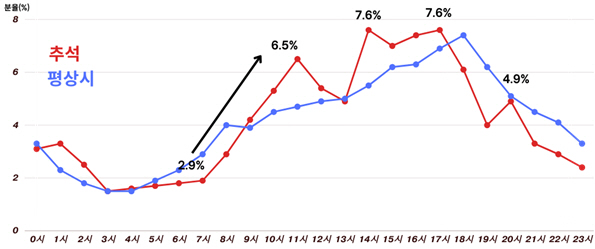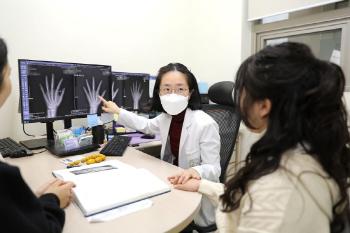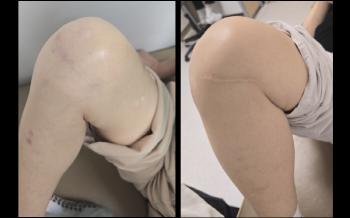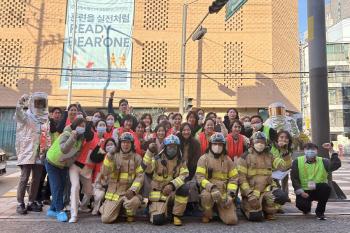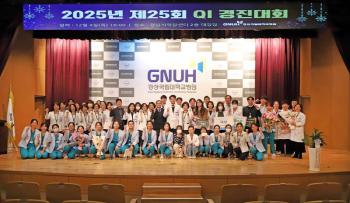Over the past six years, the average number of traffic accident patients per day during the Chuseok holiday has been 1.3 times the usual...It's the most at 2pm and 5pm
|
According to the analysis results of the Korea Centers for Disease Control and Prevention, the average number of traffic accident patients per day during the Chuseok holiday was 96.3, 1.3 times more than the usual 75.9. During the holiday period, 108.2 people had the largest number of days before Chuseok.
|
By gender, the number of traffic accident patients during the Chuseok holiday decreased in men (65.4% → 61.0%) and women (34.6% → 39.0%) increased. By age, the age group aged 50 or older decreased, and the incidence rate of those in their 0s and 40s increased.
In addition, the severity of traffic accidents was different depending on whether or not protective equipment was worn. As a result of analyzing hospitalization and death results according to whether or not to wear a car seat, hospitalization and death in the case of not wearing them were 5.3% and 0.4%, respectively, higher than those in the case of wearing (3.4% hospitalization and 0.3% death). In the case of seat belts, 20.6% of those who wore them were hospitalized, 24.5% of those who did not wear them, and 1.0% of those who wore them died, while 2.3% of those who did not wear them were more than twice as high.
Looking at the seat belt wearing rate by seat, the driver's seat (85.1%) and the passenger seat (91.8%) were high, but the rear seat was 48.0%, which was less than half. The importance of rear seat seat belts can also be seen in hospitalization and death data. Hospitalization and death were 13.7% and 0.3% in the case of wearing seat belts in the back seat, respectively, but 17.0% and 0.9% were higher in the case of not wearing them.
Lim Seung-kwan, head of the Korea Centers for Disease Control and Prevention, said "It was found that an average of more traffic accidents occur per day than usual during the Chuseok holiday when the whole family moves together, and traffic accidents are one of the main causes of damage and the biggest cause of severe trauma. Although wearing car seats and seat belts can reduce hospitalization and death in the event of an accident, the rear seat still has a low rate of wearing seat belts"As small practice protects great safety, we urge all citizens to practice basic safety rules and have a safe and peaceful Chuseok holiday."
◇ Traffic accident prevention rules during Chuseok holidays
▲ Inspect the vehicle before operation, such as the brake system of the engine
▲Wear seatbelts for all seats
▲ Using car seats according to age
▲ Get proper rest while driving
▲Do not use your cell phone while driving
▲ Take a rest when you are sleepy or tired
This article was translated by Naver AI translator.

